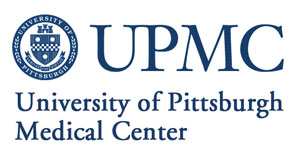Antibiotic Resistant Community-Acquired E. Coli
| Status: | Completed |
|---|---|
| Conditions: | Gastrointestinal |
| Therapuetic Areas: | Gastroenterology |
| Healthy: | No |
| Age Range: | Any |
| Updated: | 4/21/2016 |
| Start Date: | February 2006 |
| End Date: | December 2015 |
The purpose of this study is to review patients with E. coli infections at UPMC from January
1, 2004 to December 31, 2005 to determine if these infections have arisen in the community
rather than in hospitals or nursing homes. The occurrence of such resistant isolates could
be devastating if they were associated with bloodstream infection, such as sometimes
accompanies urinary tract infection, since antibiotic resistant E. coli is not suspected in
isolates coming from the community.
1, 2004 to December 31, 2005 to determine if these infections have arisen in the community
rather than in hospitals or nursing homes. The occurrence of such resistant isolates could
be devastating if they were associated with bloodstream infection, such as sometimes
accompanies urinary tract infection, since antibiotic resistant E. coli is not suspected in
isolates coming from the community.
The following variables will be followed: age, sex, hospital location at the time of
positive culture (ER, medical ward, ICU etc), prior hospitalization or nursing home
admission, receipt of outpatient dialysis or other regular medical care (eg, outpatient
chemotherapy), presence of invasive devices, receipt of antibiotics, including their type
and whether they were adequate for the resistance profile of the organism, prior positive
microbiologic cultures.
positive culture (ER, medical ward, ICU etc), prior hospitalization or nursing home
admission, receipt of outpatient dialysis or other regular medical care (eg, outpatient
chemotherapy), presence of invasive devices, receipt of antibiotics, including their type
and whether they were adequate for the resistance profile of the organism, prior positive
microbiologic cultures.
Inclusion Criteria:
- ll patients with E. coli infections during the time period of the study will be
reviewed. A community-associated E. coli isolate will be defined as one which was
recovered from a clinical culture from a patient at UPMC-P who had no established
risk factors for infection with an antibiotic resistant organism.
Established risk factors are defined as:
- Isolation of the organism two or more days after admission for hospitalization OR A
history of hospitalization, surgery, dialysis, or residence in a long-term care
facility within one year before the culture date
- OR The presence of an indwelling catheter or percutaneous medical device (eg,
tracheostomy tube, gastrostomy tube, or Foley catheter) at the time of the culture
- OR Previous isolation of an antibiotic resistant organism
We found this trial at
1
site
University of Pittsburgh Medical Center UPMC is one of the leading nonprofit health systems in...
Click here to add this to my saved trials
